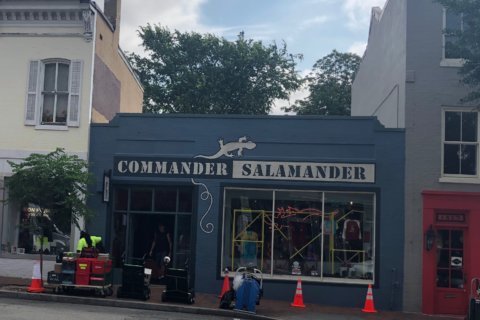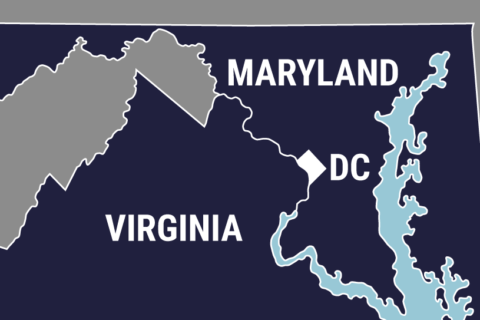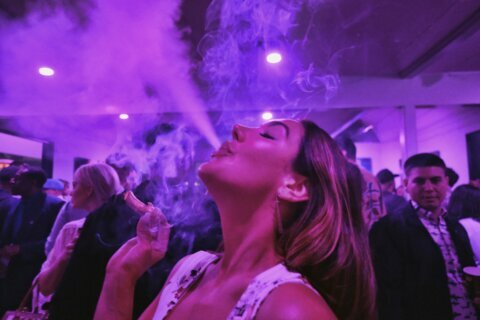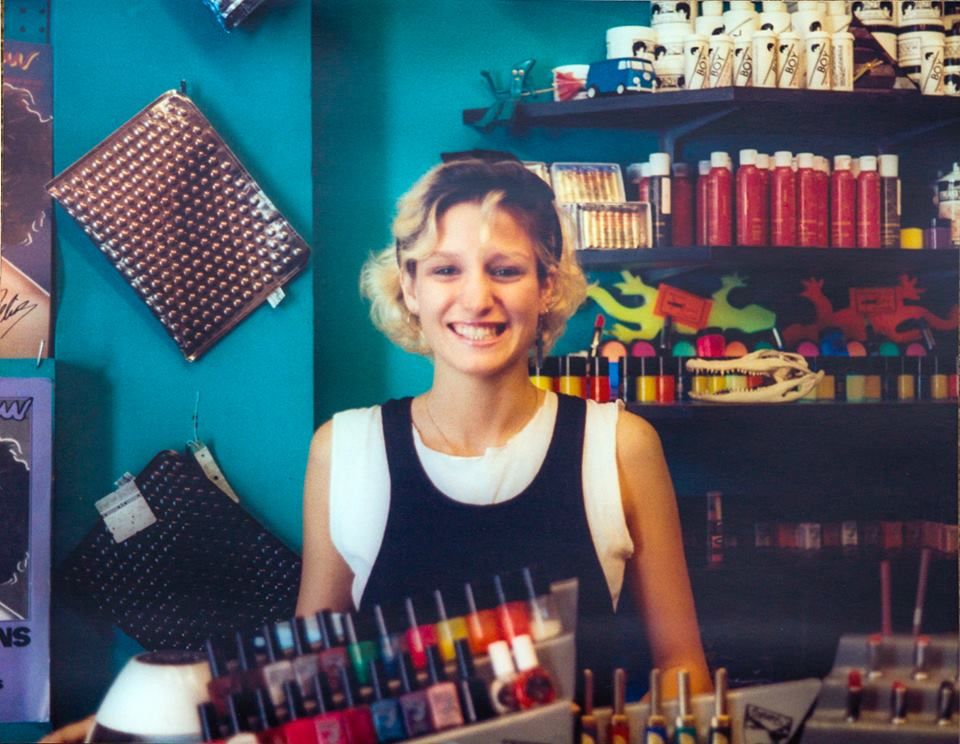
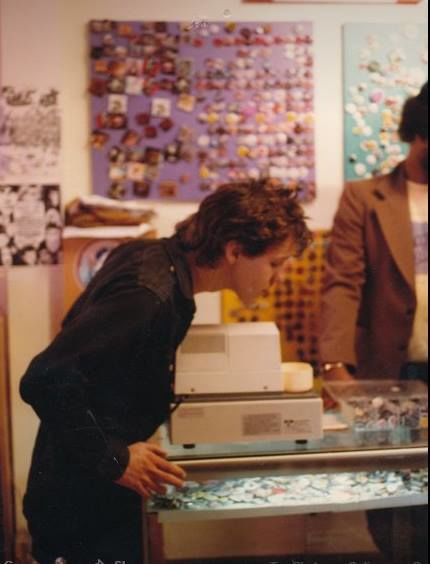
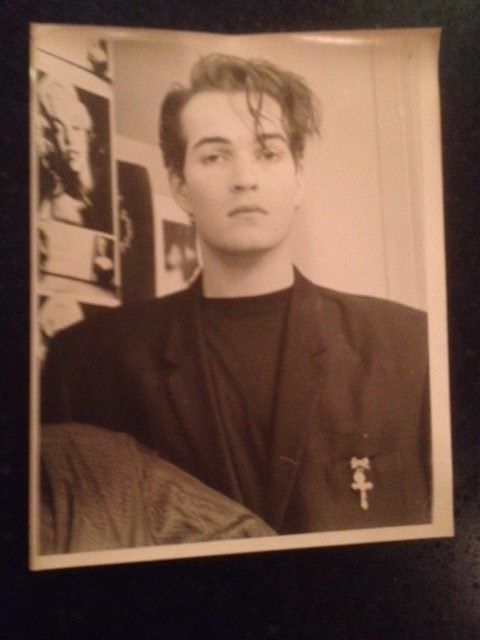
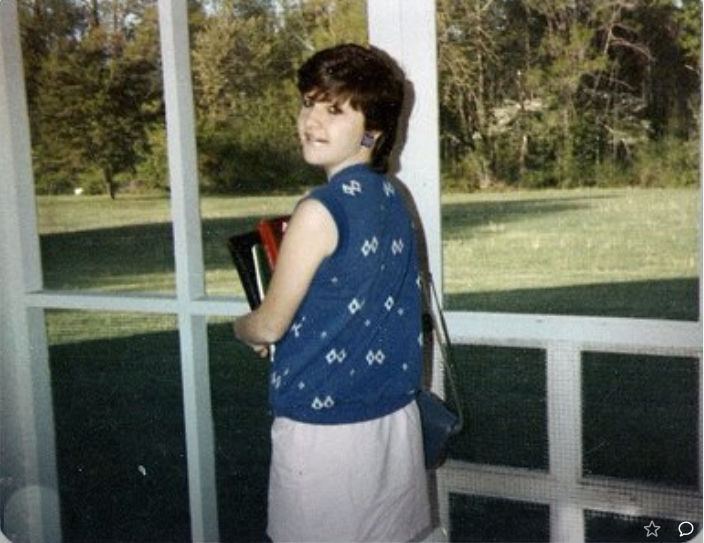
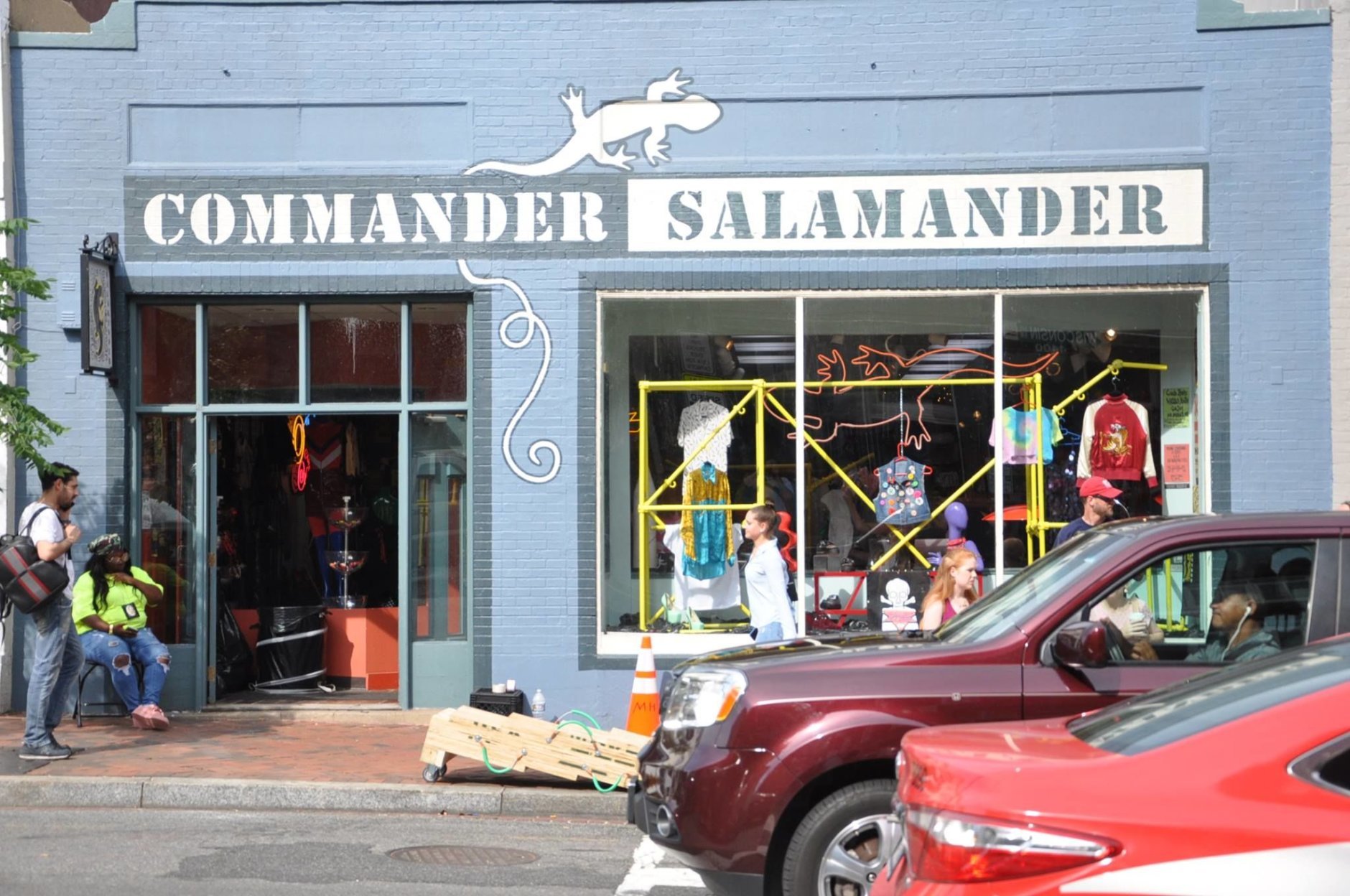
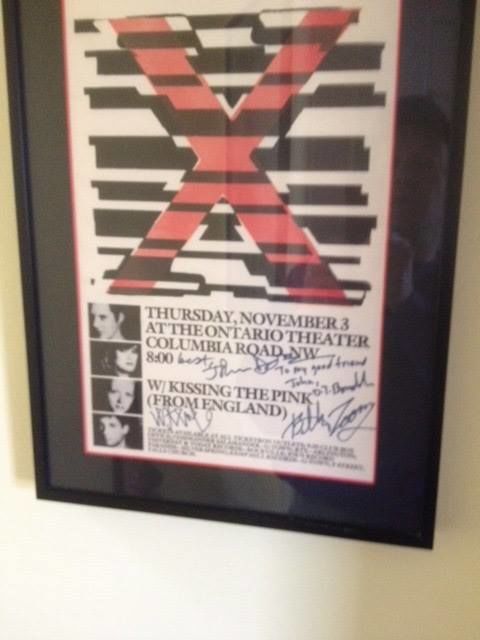
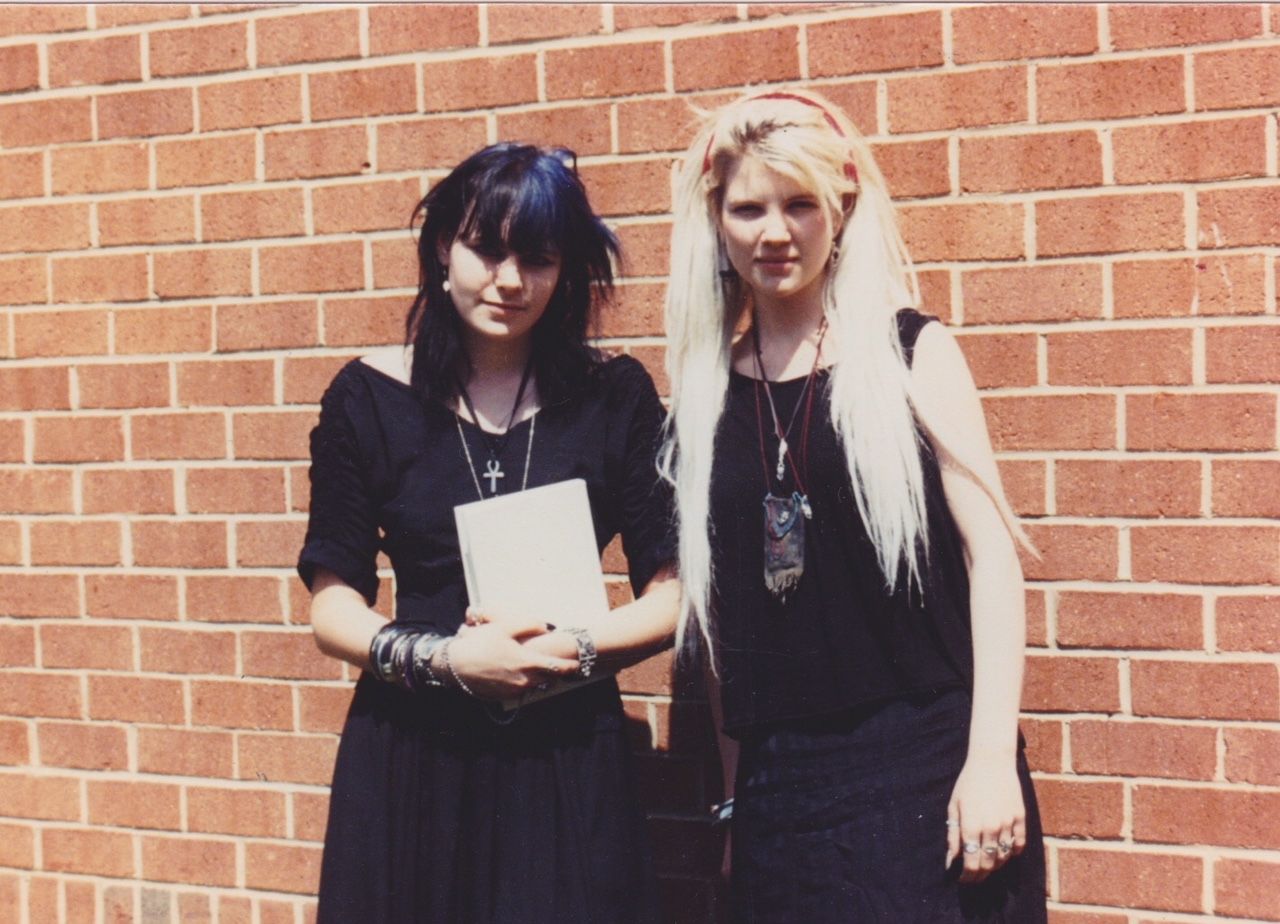
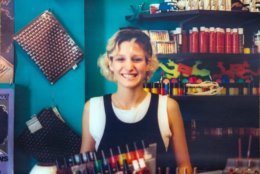
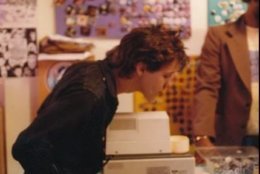
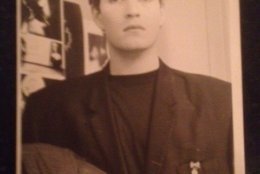
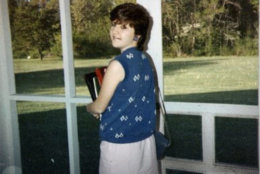
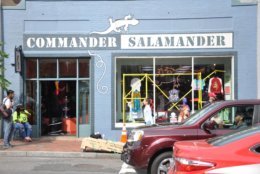
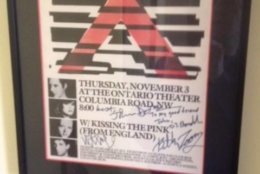
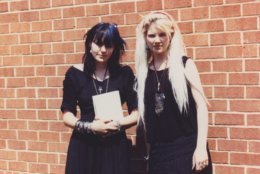
WASHINGTON — By now, you’ve probably seen photos and articles reporting the recreation of the iconic Commander Salamander storefront on Wisconsin Avenue in Georgetown for the filming of “Wonder Woman 1984.”
But some early customers of Georgetown’s first (and sometimes polarizing) punk store, which closed in 2010 after three decades, are saying “F(orget) the Hollywood version — let me tell you about the real Commander Salamander.”
“We used to cut class and drive into Georgetown during high school to check out Commander Salamander,” said John O’Connell. “They had cool people who worked there — it was about as far away from Frederick, Maryland, as you could get, in the ’80s.”
In the early days of punk and new wave, a visit to 1420 Wisconsin Ave. Northwest, between P and O streets, was a young person’s dream.
“I remember walking in the door, and they were playing Adam Ant’s ‘Prince Charming’ album,” said Anastasia Osolin. “It was my first glimpse of a world more exciting than the mind-numbing, Top 40 radio wasteland that I knew up until that point.”
Clothes, makeup, small circular badges with bands names on them — all purchased at “Commander,” as it was known to locals — would be on display at then-popular dance clubs.
“I would hang out at Poseurs, Scandals and One Flight Up. Commander Salamander was one of the few places you could go to buy clothes to wear out to Poseurs on a Saturday night,” said Ana Toribio.
In the days when “dressing punk” was a statement by alternative-minded young people, Commander Salamander was a mecca.
“They had outfits you aspired to make part of your wardrobe,” recalled Adele Marley. “Patent leather stuff, Doc Martens boots, cheetah prints, concert shirts.”
Most of the clothing wasn’t cheap, so college students would sometimes only be able to afford a David Bowie or Simple Minds badge.
“One time my older sister treated me to a whole outfit, which was a muscle shirt, pink miniskirt, and some plastic earrings that were purple,” Marley said. “I remember that outfit with so much affection.”
Osolin said her father lived in Georgetown in the early ’80s. “Whenever I visited I would beg him to take me there — I got him to buy me a ‘Frankie Say Relax’ t-shirt, some tiger-striped socks, and a day-glo green and orange Commander Salamander sweatshirt.”
“They also sold concert tickets there,” said O’Connell. “I stole an X concert poster off the wall, and got the band to sign it many years later.”
Not everyone loved Commander Salamander at the time.
“Commander Salamander was a place the Georgetown punks steered clear of, preferring not to have the ‘store bought’ look,” said musician Danny Ingram, who at the time was the drummer in early D.C. hardcore punk bands Youth Brigade and The Untouchables. “That said, I would sneak in from time to time to pick up hair dye or the like.”
As a member of one of the era’s most popular local bands, Slickee Boys singer Mark Noone said Commander Salamander was part boutique but also part meeting place.
“It was a fun place to hang out; we’d see our friends there doing the same thing we were — checking out how the whole DIY punk thing was becoming fashion,” said Noone.
Products to create outlandish hair colors and styles were a major lure for original Commander customers.
“Most important was Manic Panic hair dye, which is what I used monthly to change my hair color,” said Cait Harrington, who was a high school student at the time. “Once I moved to New York, you could get it at Trash & Vaudeville, but in D.C. Commander Salamander really was the place to go for anything alternative.”
And, for many, the ultimate fashion statement was a Mohawk hair style.
“Most of us who had Mohawks used cheap Knox gelatin to keep our spikes up, because most of us didn’t have a lot of money — but if you got sweaty, the gelatin would soften and your spikes would start to fall over,” said Debbie Barclift.
But she had heard about a product that was guaranteed to keep a Mohawk standing up.
“I remember saving up my money and buying a container. That night at a show at [9:30 Club] my spikes stood up ramrod straight. They were still straight when I went to bed. When I woke up, they were still straight and hard as a rock, but one of the spikes had actually snapped off, and was lying on my pillow case,” Barclift recalled.
“It’s great to see Wonder Woman doing D.C., and I hope they do the hardcore scene proud,” Barclift said. “D.C. hardcore man — we rock.”
Ingram said he hadn’t realized the mockup of the store had been created for the filming.
“I was actually a bit pleased to see Commander Salamander on Wisconsin yesterday. I was driving a friend home and did a double take,” said Ingram. “I thought about stopping — I guess I have fond memories of it, even if I was too cool for it back in the day.”


